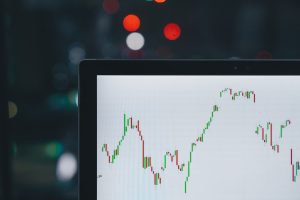Forex volatility refers to the degree of uncertainty or risk associated with the fluctuations in the exchange rate of a currency pair. It is a measure of how much the price of a currency pair changes over time. Forex volatility is important because it affects the profitability of currency trading. Understanding the level of volatility in the forex market can help traders make better decisions about when to enter or exit a trade.
Factors affecting forex volatility
There are several factors that contribute to forex volatility. These include:
1. Economic data releases: Economic data releases such as GDP, inflation, and employment reports can have a significant impact on forex volatility. Positive economic data can lead to an increase in the demand for a currency, while negative economic data can lead to a decrease in demand.
2. Central bank policy: The monetary policy decisions of central banks can impact forex volatility. For example, if a central bank raises interest rates, it can lead to an increase in the value of its currency.
3. Political events: Political events such as elections, referendums, and geopolitical tensions can impact forex volatility. For example, the Brexit referendum in 2016 caused significant volatility in the British pound.
4. Market sentiment: Market sentiment refers to the overall attitude of traders towards a particular currency. Positive market sentiment can lead to an increase in demand for a currency, while negative market sentiment can lead to a decrease in demand.
Measuring forex volatility
There are several ways to measure forex volatility. One common method is to use the average true range (ATR) indicator. The ATR indicator measures the average range of price movement over a specified period of time. High ATR values indicate high volatility, while low ATR values indicate low volatility.
Another method is to use Bollinger Bands. Bollinger Bands are a technical analysis tool that consists of a moving average line and two standard deviation lines. The distance between the two standard deviation lines represents the level of volatility. When the standard deviation lines are close together, it indicates low volatility, while when they are far apart, it indicates high volatility.
Impact of forex volatility on trading
Forex volatility can have both positive and negative impacts on trading. High volatility can lead to large price movements, which can result in significant profits or losses. Traders who are able to correctly predict the direction of the market can make substantial profits during periods of high volatility.
On the other hand, high volatility can also increase the risk of losses. Traders who are not able to accurately predict the direction of the market may experience significant losses during periods of high volatility. Therefore, it is important for traders to manage their risk by using stop-loss orders and position sizing.
Low volatility can also have both positive and negative impacts on trading. While low volatility can lead to smaller price movements, it can also lead to a lack of trading opportunities. Traders may need to adjust their trading strategies during periods of low volatility to account for the reduced trading opportunities.
Conclusion
Forex volatility is a measure of the degree of uncertainty or risk associated with the fluctuations in the exchange rate of a currency pair. It is influenced by various factors such as economic data releases, central bank policy, political events, and market sentiment. Understanding the level of volatility in the forex market is important for traders to make better decisions about when to enter or exit a trade. While high volatility can lead to significant profits, it can also increase the risk of losses. Therefore, it is important for traders to manage their risk by using stop-loss orders and position sizing.





